Quick tips: add guests to a team in Teams, understand permissions, settings and more
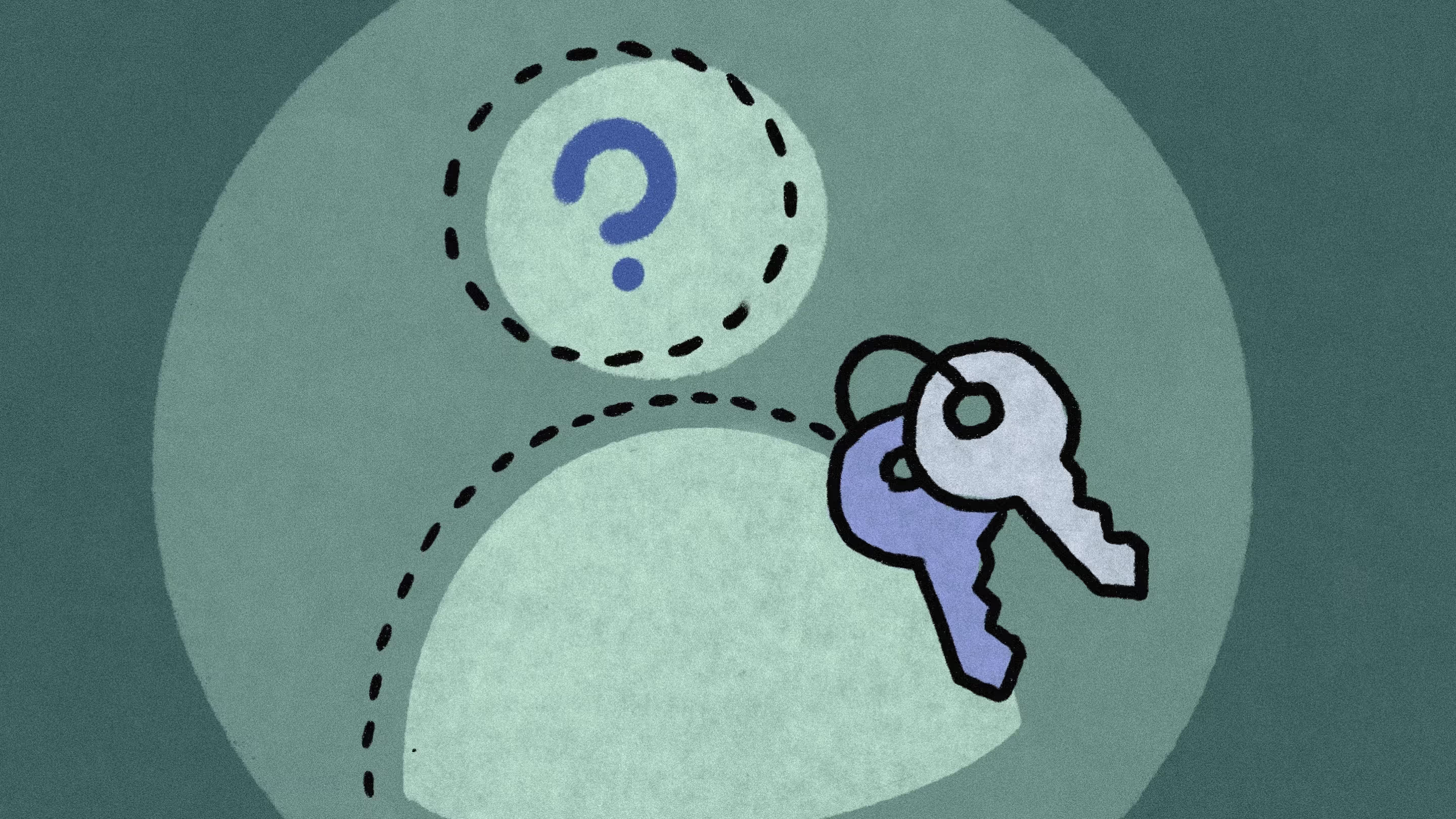
Table of contents
Learn how to collaborate with users outside of your organization safely. We explain everything for secure guest access in Microsoft Teams—from how to add a guest, adjust permissions and other settings.
In Microsoft Teams, you have a couple of different ways to grant outside users access to your organization’s resources:
- External sharing is a great way to share documents, files, folders, lists, libraries, and even complete sites in your SharePoint Online.
- Guest access in Teams, on the other hand, lets users collaborate with people outside your organization by granting them access to teams and channels. That way, you maintain complete control over your company's data.
Brush up on Teams governance best practices for secure collaboration
Ready to see how you can collaborate securely using guest access in Teams? Let’s go.
https://youtu.be/veHu-Z75sEw
How to add a guest to your team in Microsoft Teams
Once you've enabled guest access and configured your org-wide settings to your liking, it's time to start adding some guests!
Only team owners can add a guest in Teams–so if you're an IT admin you might need to make yourself an owner of a team before you start adding guests to it. (You can do this is in the Teams admin center by selecting Teams > Manage teams)
To add a guest to your team in Teams:
1. In the Teams app, select Teams on the left sidebar and go to the team you want to add a guest to.
2. Select More options (...) then Add member.
3. Enter the guest's email address, then click on Edit guest information to give them a friendly user name. Then click Add. Your guest will receive a welcome email invitation.

Guests must have a Microsoft 365 work or school account. If they don't have a Microsoft account associated with their email, they'll be prompted to create one for free.
If you're interested in furthering your understanding of the parts of Teams, check out this deep dive on Microsoft Teams Channels.
Set guest permissions for an individual team
Team owners can also configure some guest permissions for their team once a guest has been successfully added (see below).
To set guest permissions for an individual team in Teams:
1. Select Teams on the left side of the app.
2. Go to the team name and select More options (...), then Manage team.
3. Under Settings, click on Guest permissions, then check or un-check the permissions you want to allow. Currently, you can choose to give guests permission to create, update, or delete channels. (File permissions for guests are actually configured in the SharePoint settings by a global admin)
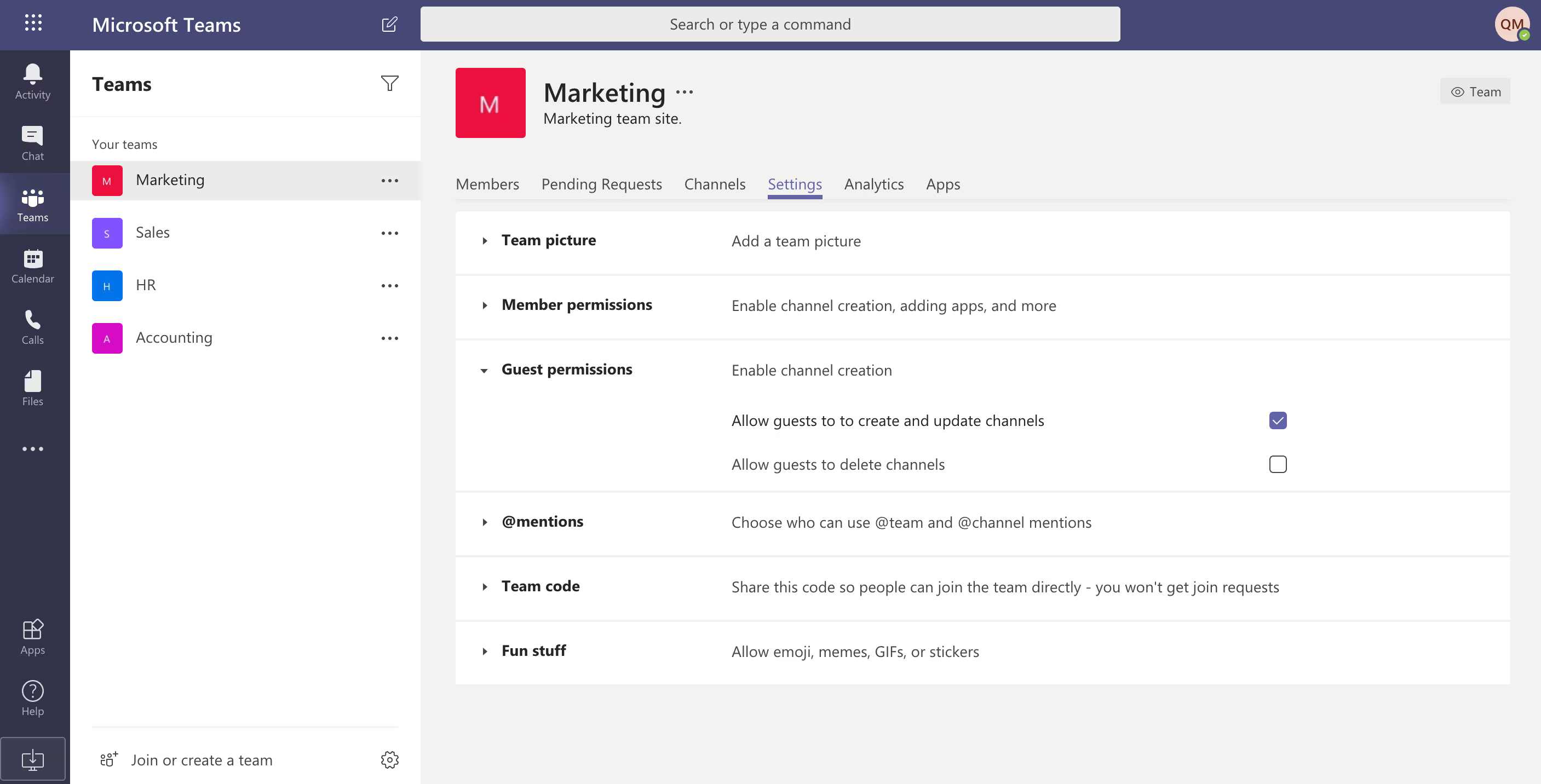
With guest access, your content never leaves your sight
External file sharing can be a great option to collaborate on content with people outside your organization. But then you need to keep track of and manage what's been shared to ensure that content stays secure over time.
With guest access in Teams, your content never leaves your sight—all your data is kept in your tenant, where you can protect it, monitor it, and control it.
Because needs vary between projects and departments–over time, you'll probably wind up using a combination of the two in your organization. Educate your users and have a governance plan for both methods to ensure your data stays secure, whether people choose to use external sharing or guest access in Teams.
Microsoft Teams guest access permissions
Before we jump into Teams guest access permissions, it’s important to understand how guest access differs from external access in Microsoft Teams.
- External access gives access permission to an entire domain—allowing Teams users from other domains to find, contact, and set up meetings with you. External users can call you through Teams and send instant messages. But if you want them to be able to access teams and channels, guest access might be the better option.
- Guest access is when you invite an external user to be a member of the team—it gives access permission to an individual rather than a domain. Once a team owner has granted someone guest access, they can access that team's resources, share files, and join a group chat with other team members.
Dive deeper: Learn everything you need to know about file sharing in our ultimate guide to Microsoft 365 external sharing.
We hope that’s cleared up some confusion and that you now have a better idea of the differences between guest access and external access.
So what things can your users and external users do in Teams? Let's take a look:
*Team owners control these settings. Also note that Microsoft 365 admins control the features available to guests. We'll get into that more a little later.
You can also add external users to a Microsoft 365 group as a guest, although guest permissions in a Microsoft 365 group are slightly different and grant them access to more resources outside of Teams.
Check it out: 3 step-by-step ways to review external access in Microsoft Teams
Enable guest access in Microsoft Teams
For external users to be granted guest access, you need to have guest access enabled as an org-wide setting in Teams—it's turned off by default.
Note: As of February 2021, guest access capabilities in Microsoft Teams are turned on by default for any customers who have not configured this setting. This brings the Teams guest access capability into alignment with the rest of the suite, where the setting is already on by default.
Before you get started in the Teams admin center, check to make sure that guest access is enabled at the other three authorization levels.
To turn on guest access in Teams, you need to be a Microsoft 365 global admin and take the following steps:
1. Go to the Microsoft Teams admin center, select Org-wide settings, then click on Guest access.
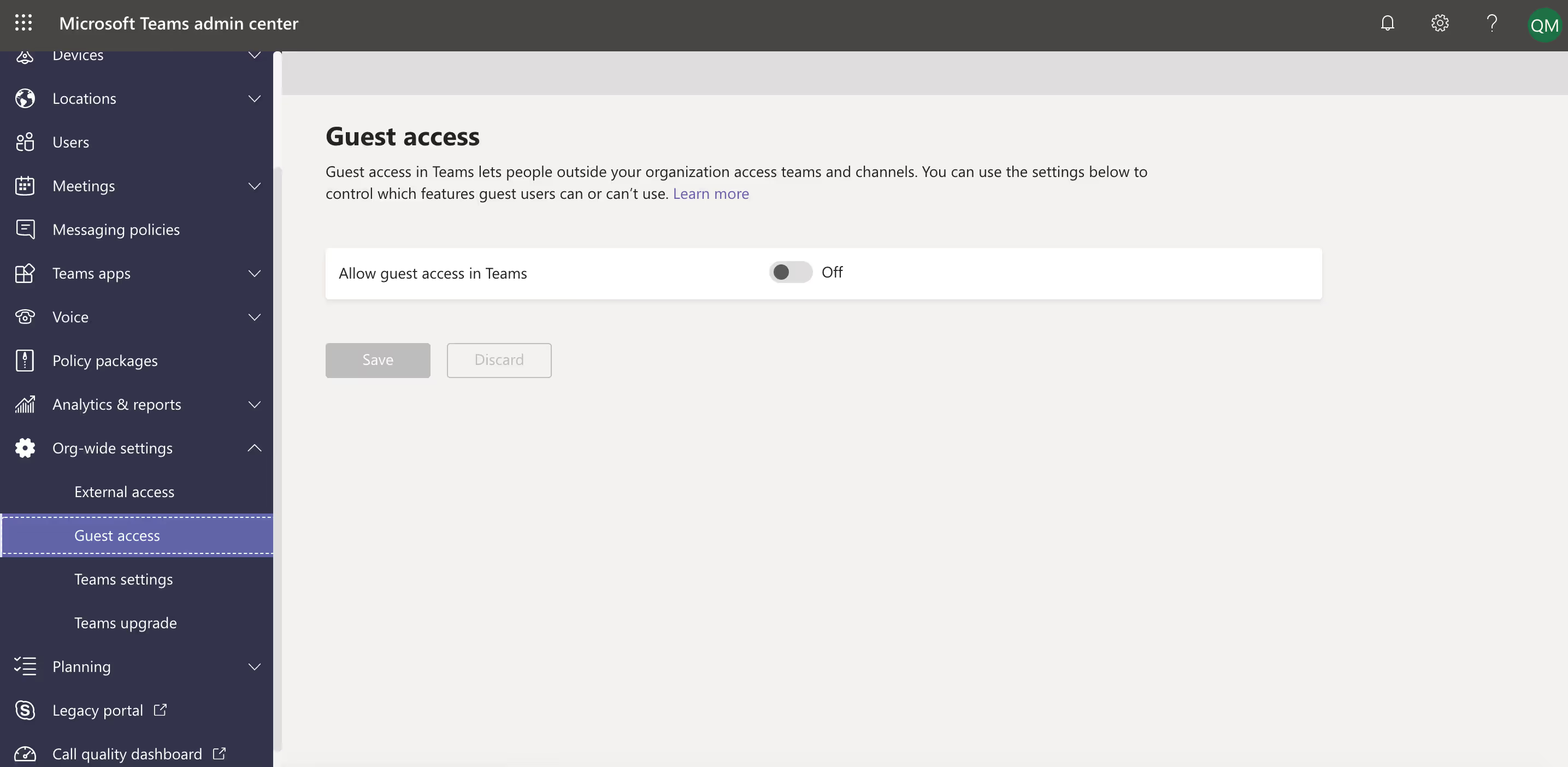
2. Toggle the Allow guest access in Teams switch to On. Then click Save.

It can take up to 24 hours for changes to take effect. So if users are still prompted to “Contact your administrator” when they try to add a guest to their team, access may not yet be ready.
Are you using default settings in Microsoft 365 Groups, Azure Active Directory, and SharePoint Online? Then following the above steps may be enough to set up guest access.
👉Free course alert! How to balance security and end-user productivity, without it taking over your entire IT team’s workload.
Configure guest access in Microsoft Teams
Once you’ve enabled guest access, it’s time to specify exactly what guests will be allowed to do and see in your teams.
The page in the Teams admin center where you enabled guest access is also where you can configure Calling, Meeting, and Messaging settings for guests.

Go to the same page in the Teams admin center where you enabled guest access...

...and scroll down to configure all the Calling, Meeting, and Messaging settings.
Depending on what you want to allow, you can select On or Off for the following capabilities:
- Make private calls
- Allow IP video
- Screen sharing mode
- Allow Meet Now
- Edit sent messages
- Guests can delete sent messages
- Chat
- Use Giphys in conversations
- Giphy content rating
- Use memes in conversations
- Use Stickers in conversations
Click Save to apply your new settings.
What is Microsoft Teams guest access, and how does it work? Simply put, Microsoft Teams guest access allows users outside of your organization to be added to a team or channel within your organization. Thus, enabling them to collaborate with internal team members.
It creates a guest account for the external user, which is linked to their email address. After they're added guests can access team chats, files, meetings, and more, depending on the permissions configured by the team owner or administrator.
How do I enable guest access in Microsoft Teams for external users? We go into more detail about this above, but the short answer is that you need to access your Microsoft Teams admin center to turn on guest access for the entire org. After it's on, team owners can easily add guests to their teams with an email address. Guests get an invite to join in their inbox, and they can access through the web or desktop app. Easy.
Can guests access all the features of Microsoft Teams, or are there some limitations? Of course, there are some limitations, which change depending on your security set up. Guests in Microsoft Teams can access most of the features available to regular users, including chat, meetings, files, etc. But, there are some restrictions, such as being unable to create new teams or channels, modify team settings, or delete messages in channels. Team owners can also update specific permissions for each unique guest, limiting their access where appropriate.
.jpg)


.svg)
%20(1).avif)





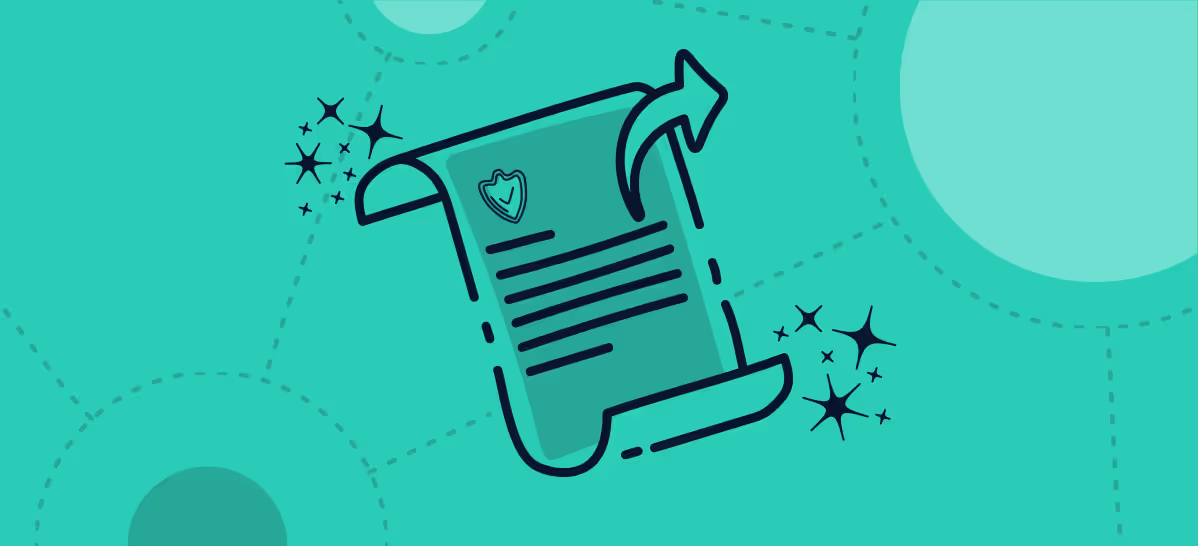
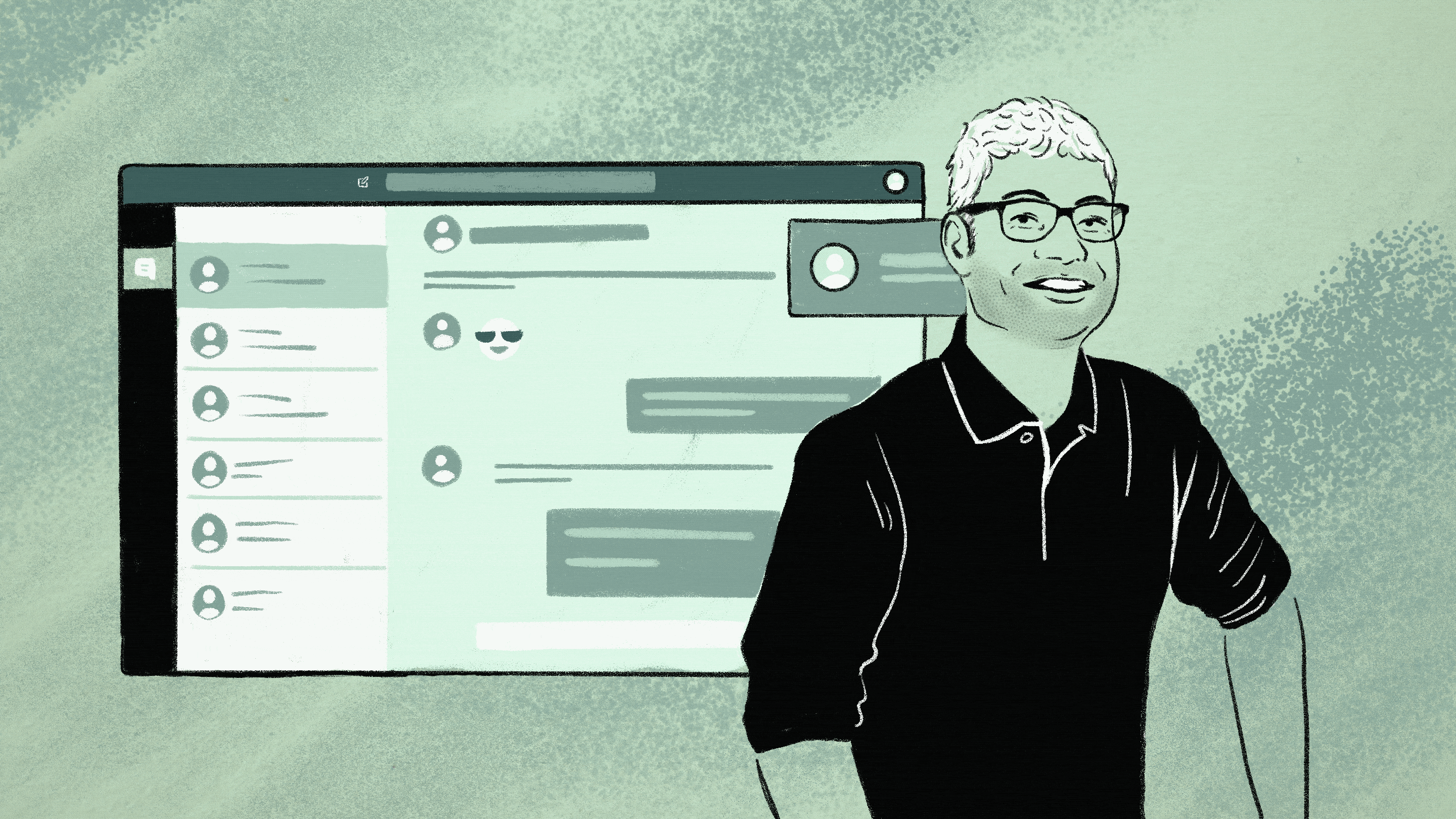
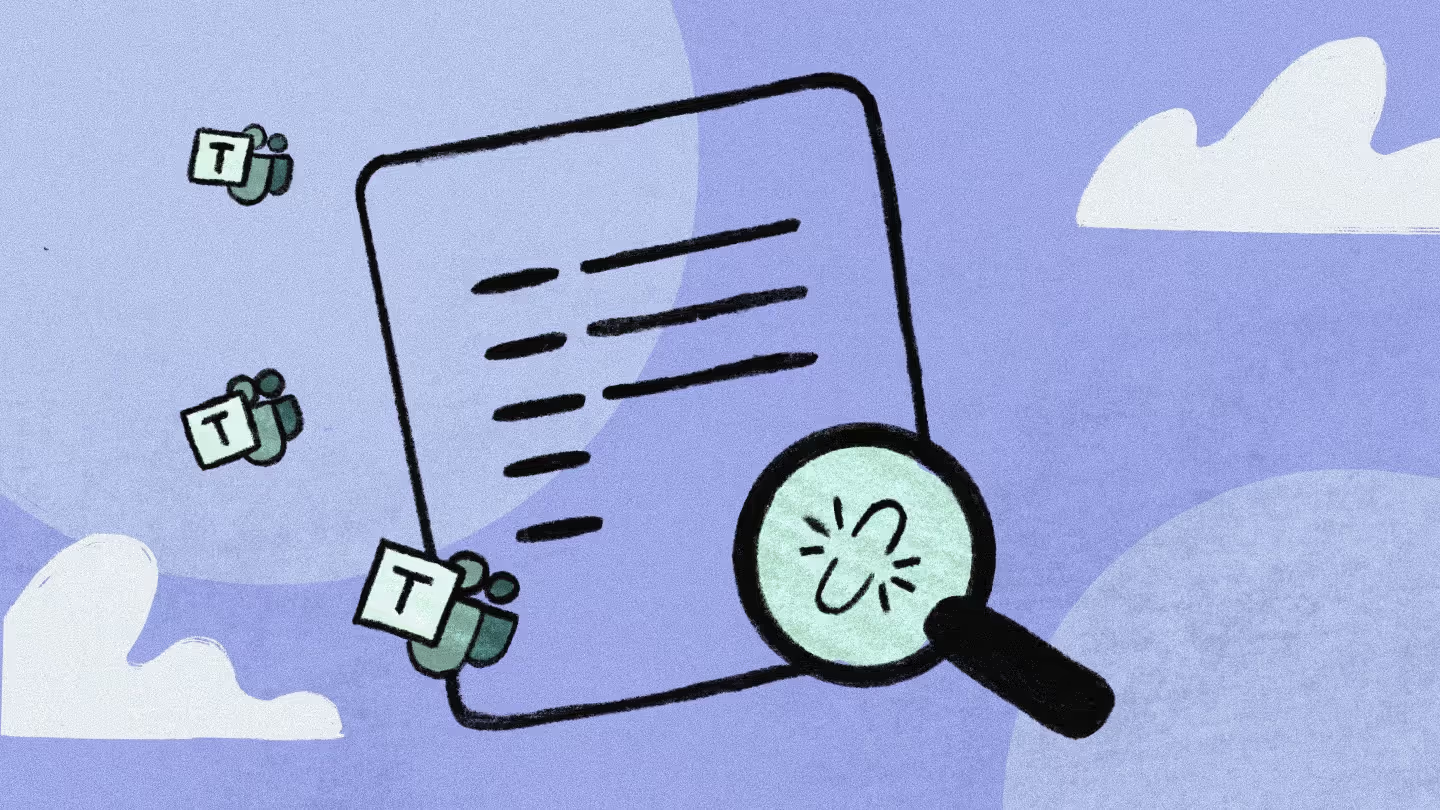




.jpg)


.png)

